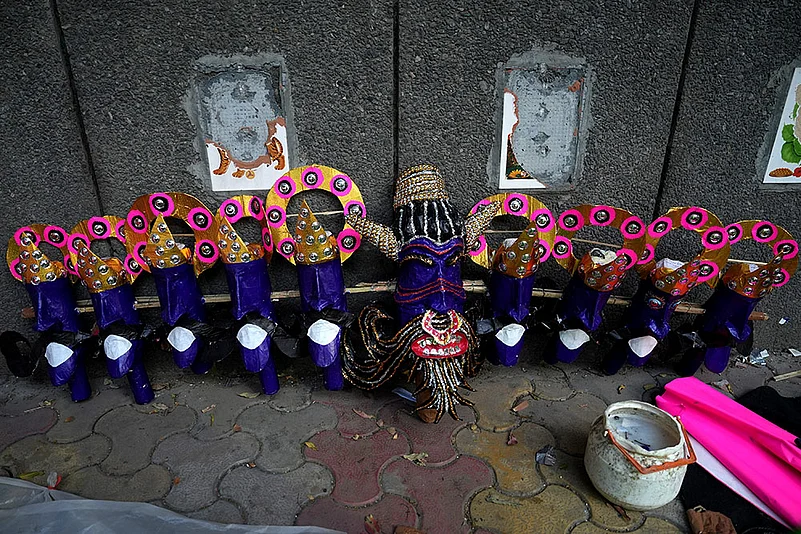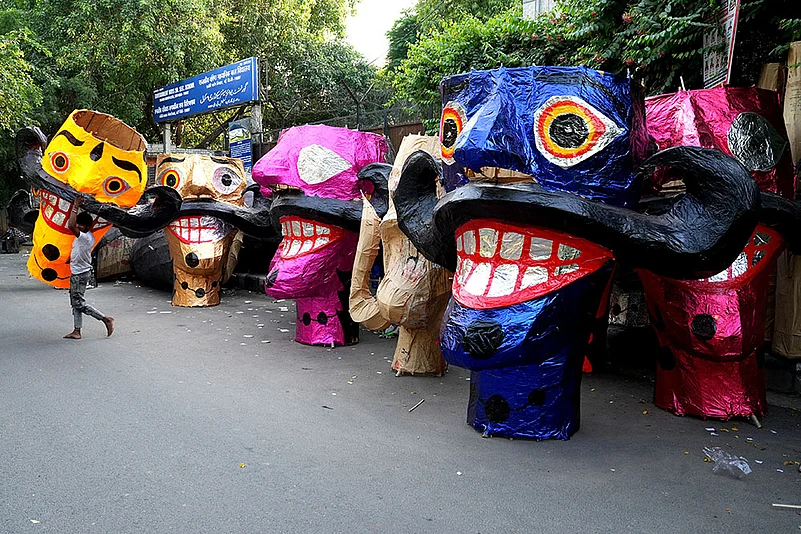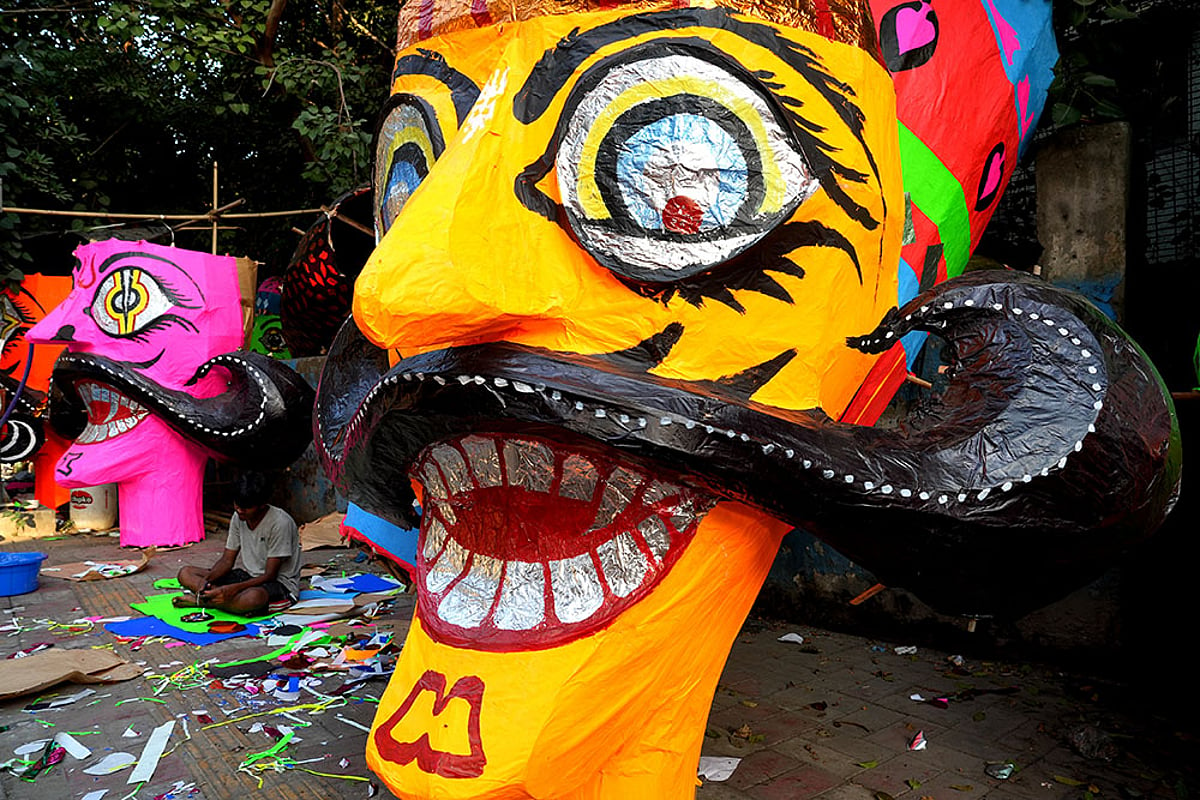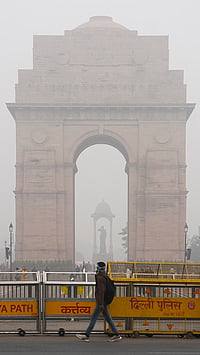The festival of Dussehra will be held October 12, on the last day of the Navratri (nine nights) festival. It symbolises the triumph of good over evil and culminates with the burning of fire crackers-stuffed effigies of Raavan.

A 50-foot effigy is created at a cost of approximately Rs 10,000-15,000 and is sold for Rs 500 per foot. A significant portion of sales occurs in the final two or three days of the Ram Leela festival. In addition, the effigies of Meghnad and Kumbhakaran, Raavan’s brothers, are also in high demand throughout the country

Every year, after Rakshabandhan in August, for three months, the entire stretch of two-three kilometres in Tatarpur comes alive. On the pavements, dividers and beneath the metro bridge, hundreds of artisans—ordinary men and women, known as ‘Raavanwalas’—are seen giving shape to Raavan’s bulging eyes, broad lips and curly moustache.

Each effigy reflects the craftsman’s personal style, featuring unique elements like exaggerated moustaches and expressive eyes that capture Raavan’s fearsome essence.

The effigies created by these artisans are in demand on the day of Dussehra, not just in the Delhi-NCR region but also in states like Uttar Pradesh, Rajasthan and Punjab. They occasionally attract international buyers as well. These artisans—some extremely skilled and some amateur, but passionate to learn the craft—practically put their lives on hold for these three months.

The artisans know that the effigies would eventually go up in flames. This is the reason why they avoid participating in the Raavan dahan ceremony. As creators, they end up forming an emotional bond with Raavan. Raavan is a “blessing” for them.

Some artisans belong to the Gadia Lohar community, a nomadic tribe known as wandering blacksmiths, whose lineage traces back to Maharana Pratap’s army. After his defeat, they vowed not to return home until India’s independence.

Each effigy is meticulously constructed through a process called “napai” (measurement). It begins with creating a bamboo skeletal frame, which is then encased in layers of old chiffon sarees and brown paper.

The artisans—some extremely skilled and some amateur, but passionate to learn the craft—practically put their lives on hold for these three months.

Today, artisans have adapted their materials for enhanced durability by using green bamboo from Himachal Pradesh and Uttarakhand, along with waterproof paper from Japanese bags. The most experienced craftsmen mentor younger generations to preserve this cherished art form for the future.




















